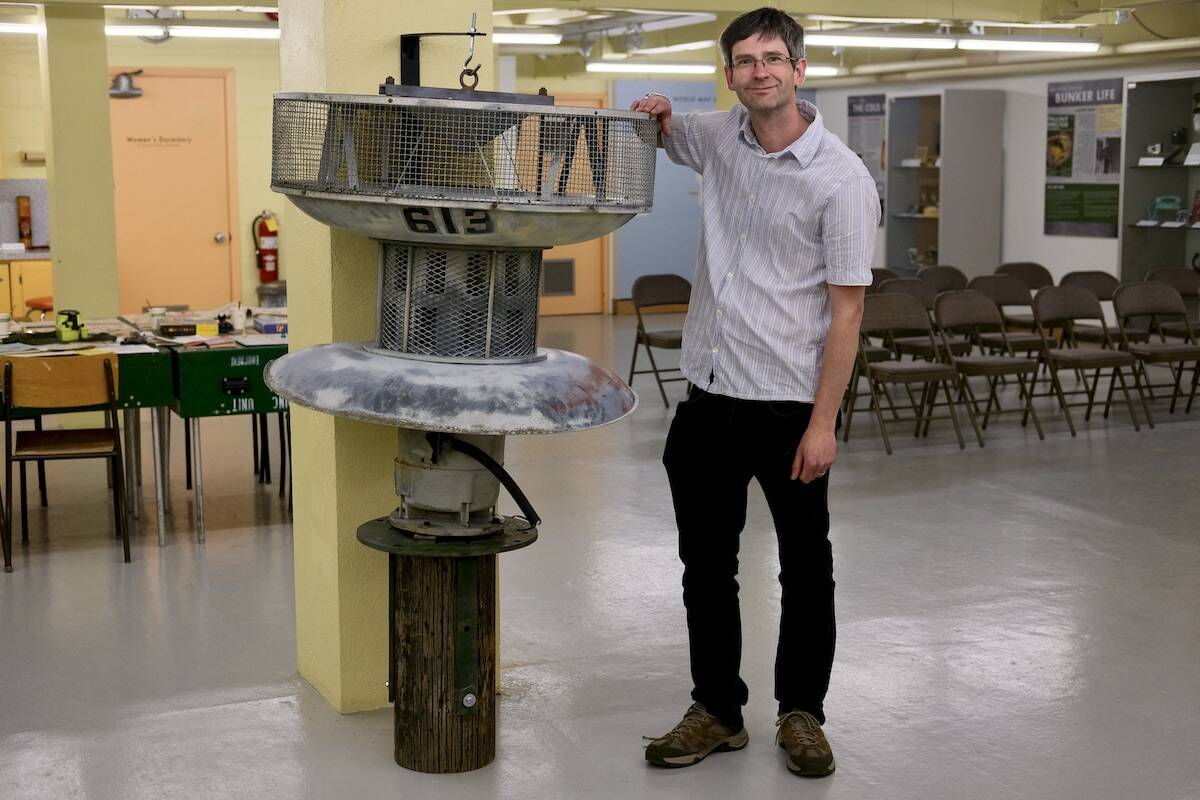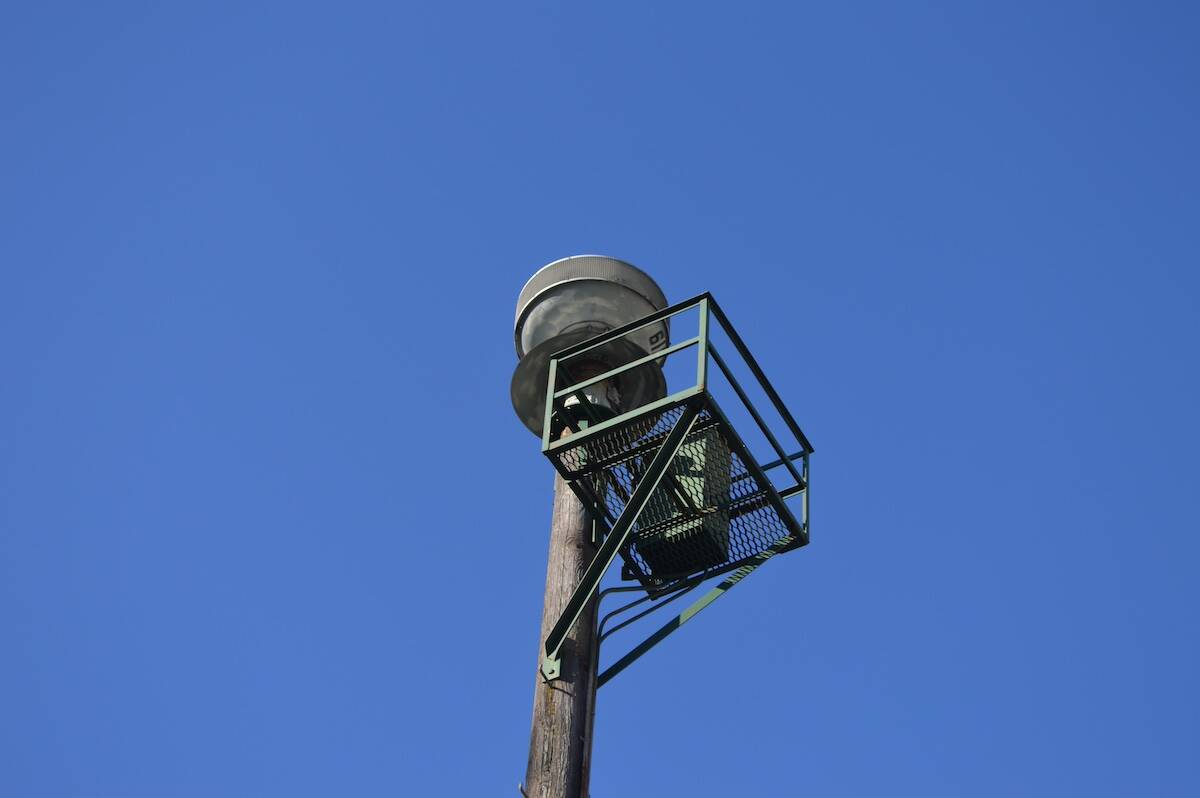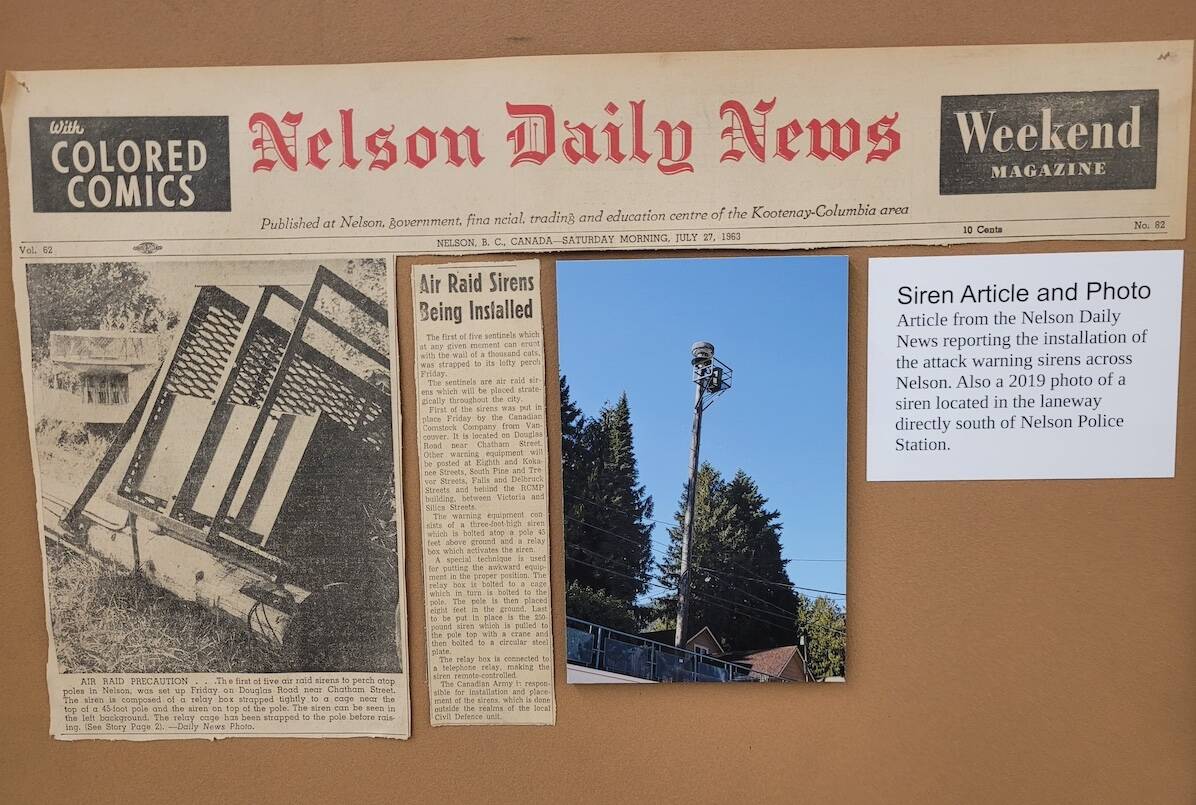They’ve been silent and almost invisible in Nelson for 60 years.
The city’s five air raid sirens were installed in 1963 to warn residents of a nuclear attack or an air raid during the Cold War era when this seemed conceivable or even likely.
The sirens were strategically placed on top of tall poles around town. They were decommissioned in the 1990s but not taken down. Four of them still stand, and the fifth is now in the Nelson Museum as part of the Cold War Bunker.
“It’s quite interesting from a historical point of view,” says the museum’s archivist Jean-Philippe Stienne. “They’re a Cold War relic, silent sentinels watching over the city.”
The fact that Nelson’s sirens still exist is very unusual, he says, because hundreds of similar sirens in many towns across the country were taken down long ago.
The sirens are located at the following sites: at the northwest corner of Eighth Street and Kokanee Avenue; the north side of Douglas Road (close to the east end of Chatham Street); the east side of South Pine Street (between Selby and Trevor Streets); west of Stanley Street on the south side of the lane between Silica and Victoria Streets; and the northeast corner of Falls and Delbruck Streets.
The siren recently installed at the museum was taken down because its pole was beginning to fail and it was considered a safety threat.
“Now it’s great because we can actually get a closer view of the siren,” says Stienne. “Usually, you were looking up at this siren distantly in the sky, but now you can actually see it close up.”
The sirens were tested routinely until the 1980s, and there were times they went off by accident, he says. But in the later stages of the Cold War, people didn’t seem to notice the tests.
“We have some files in the archives that record these events. They were disappointed by the lack of reaction by some of the population to the sirens going off. They weren’t responding to it.”
The placement of one of the sirens in the Cold War bunker is very fitting, says Stienne, because they round out the history that is preserved there.
The fear of a nuclear attack by the Soviet Union began in the 1950s, and in the 1960s the Canadian government built secret underground bunkers in about 50 towns and cities across the country. Nelson’s was built beneath the Gray Building, the current location of the post office next to the museum.
“The main purpose of these bunkers was to protect the continuity of government during a nuclear attack, and to restore order in the aftermath,” says Stienne.
At the time there was a list, which has not survived, of 70 Nelson community leaders and technical experts who were expected to leave their families and house themselves in the bunker, to re-emerge after the attack and re-establish local government and the workings of society.
Nelson’s underground bunker remained undisturbed for decades until it was opened as a permanent exhibit at the museum in 2020.
READ MORE:



